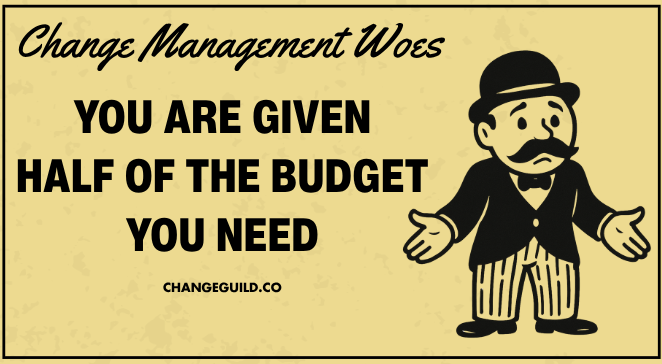Speaking The Language Of Revenue: A Guide For Change Management Practitioners
Change management isn’t just about communication and training - it’s about driving revenue. Learn how to connect your change initiatives to financial outcomes and speak the language that executives understand.

Change management is often seen as a people discipline - focused on communication, training, and stakeholder engagement. But if you really want to capture the attention of executives and secure support for your initiatives, you need to speak the language of revenue.
Why Revenue Matters to Executives
In any organization, the ultimate goal is growth and profitability. Revenue is the universal language of business. While leaders may care about employee engagement, cultural transformation, or process improvements, they are far more likely to support initiatives that connect directly to the bottom line.
Translating Change Management into Revenue Impact
Change management is not just a feel-good exercise. It directly impacts revenue when done well - and threatens it when done poorly.
- Faster Adoption Means Faster ROI: The sooner people adopt a new system, the sooner the company can realize value.
- Reducing Errors Lowers Costs: Effective change management minimizes mistakes that can be costly to fix.
- Employee Retention Saves Money: Engaged employees are less likely to leave, reducing turnover costs.
- Customer Retention Drives Revenue: Satisfied customers stay longer, spend more, and are less likely to switch to competitors.
How to Speak the Language of Revenue
- Connect Change to Business Outcomes: Instead of focusing on change activities, link your efforts to revenue-driving goals.
- Instead of: “We will train employees on the new CRM.”
- Say: “Our change approach will ensure faster CRM adoption, improving sales team efficiency and increasing customer retention.”
- Use Metrics that Matter: Speak in terms of measurable financial impact.
- Time to Value (TTV): How quickly will the change generate positive outcomes?
- Cost of Delay: What is the financial impact of slow adoption?
- Productivity Gains: How much time or effort will be saved?
- Showcase Financial Risks of Poor Change Management: Help executives see the cost of failure.
- Lost Revenue: Customers may leave if a change disrupts service.
- Cost Overruns: Rework or system fixes due to poor adoption.
- Turnover Costs: High employee turnover if change is mismanaged.
Example: Turning Change Management into Revenue Language
Scenario: New Customer Billing Platform
- Typical Change Management Statement: “We will support employees through the transition to the new billing system.”
- Revenue-Focused Statement: “By ensuring rapid adoption of the new billing platform, we will accelerate revenue collection, reduce billing errors, and improve customer satisfaction.”
Gaining Executive Buy-In with Revenue Language
- Lead with Impact: When presenting your change plan to leaders, start with the revenue impact.
- Tie Change Activities to Financial Outcomes: Make it clear how each change activity (training, communication, leadership coaching) drives revenue.
- Speak Their Language: Use the terms they care about - ROI, margins, customer lifetime value (CLV), cost savings.
Practical Tips for Change Practitioners
- Ask About Financial Goals: When meeting with executives, ask how the change aligns with their revenue goals.
- Track Revenue Impact: Build metrics into your change plan that measure financial outcomes.
- Tailor Your Messaging: When speaking to the CFO, emphasize cost savings. For the CRO, focus on sales impact.
Final Thought: Change Management is a Revenue Driver
When you speak the language of revenue, you transform change management from a “nice-to-have” support function to a critical driver of business success. Learn to connect your work to the bottom line, and you’ll never struggle to gain executive support again.
Power to the Practitioner.
Related Reading
Looking for more? These related reads might help:



Want leadership to truly hear you? Speak their language
We help change practitioners connect their work to what executives care about most—growth, risk, and results. From reframing outcomes to articulating ROI, we’ll help you translate change into business value that earns attention and investment.
Ready to make your work resonate in the boardroom?



